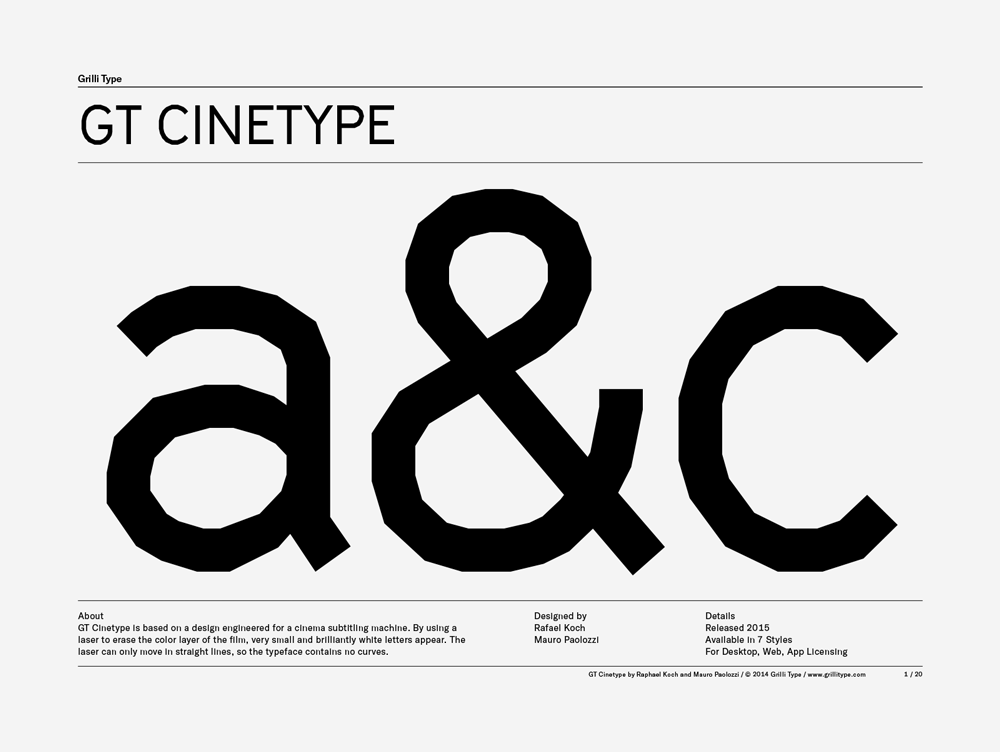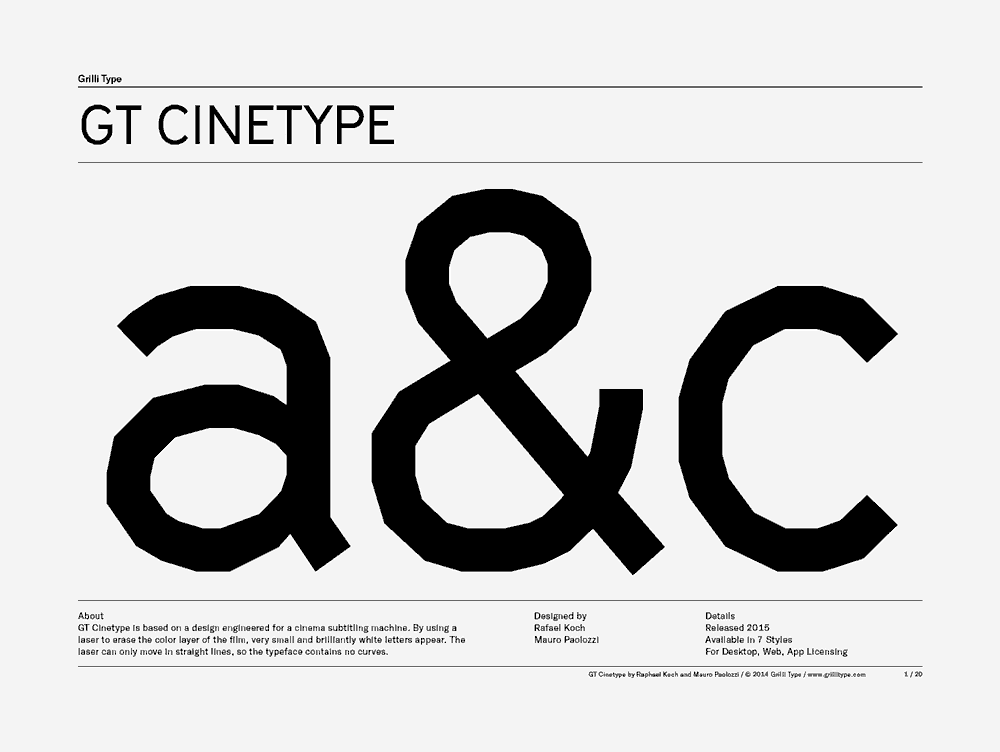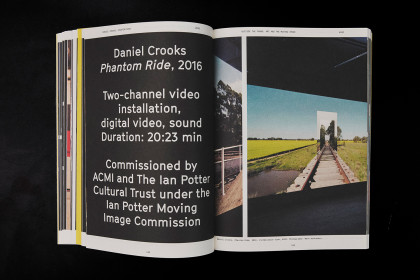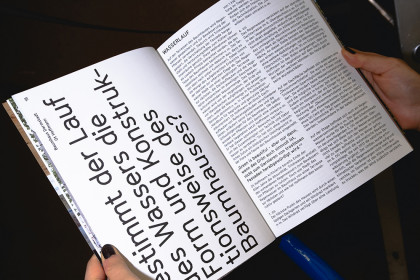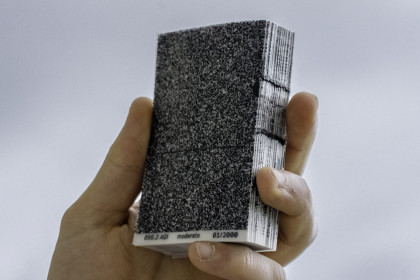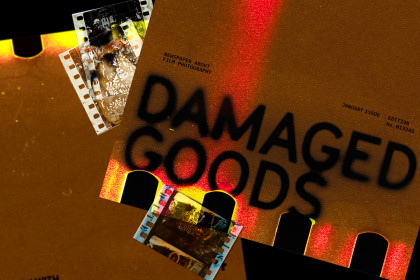GT Cinetype
Family overview
- Light Italic
- Regular Italic
- Bold Italic
- Mono
- LightGodzilla 1977 by Ishirô Honda with Raymond Burr, Akihiko Hirata, Momoko Kôchi
- Light ItalicThis Is Spinal Tap 1984 by Rob Reiner with Rob Reiner, Michael McKean, Christopher Guest
- RegularSen to Chihiro no Kamikakushi 2001 by Hayao Miyazaki with Rumi Hiiragi, Miyu Irino, Mari Natsuki
- Regular ItalicRequiem for a Dream 2000 by Darren Aronofsky with Ellen Burstyn, Jared Leto, Jennifer Connelly
- BoldTroll 2 1990 by Claudio Fragasso with Michael Stephenson, George Hardy, Margo Prey
- Bold ItalicSe7en 1995 by David Fincher with Morgan Freeman, Brad Pitt, Kevin Spacey
- MonoPulp Fiction 1994 by Quentin Tarantino with John Travolta, Uma Thurman, Samuel L. Jackson
- Settings
Typeface information
GT Cinetype is based on a design engineered for a cinema subtitling machine. By using a laser to erase the color layer of the film, very small and brilliantly white letters appear. The laser can only move in straight lines, so the typeface contains no curves.
Typeface features
OpenType features enable smart typography. You can use these features in most Desktop applications, on the web, and in your mobile apps. Each typeface contains different features. Below are the most important features included in GT Cinetype’s fonts:
- CASE
- Case sensitive forms
(ROBOCOP)
- ONUM
- Oldstyle figures
10.03.1985
Typeface Minisite
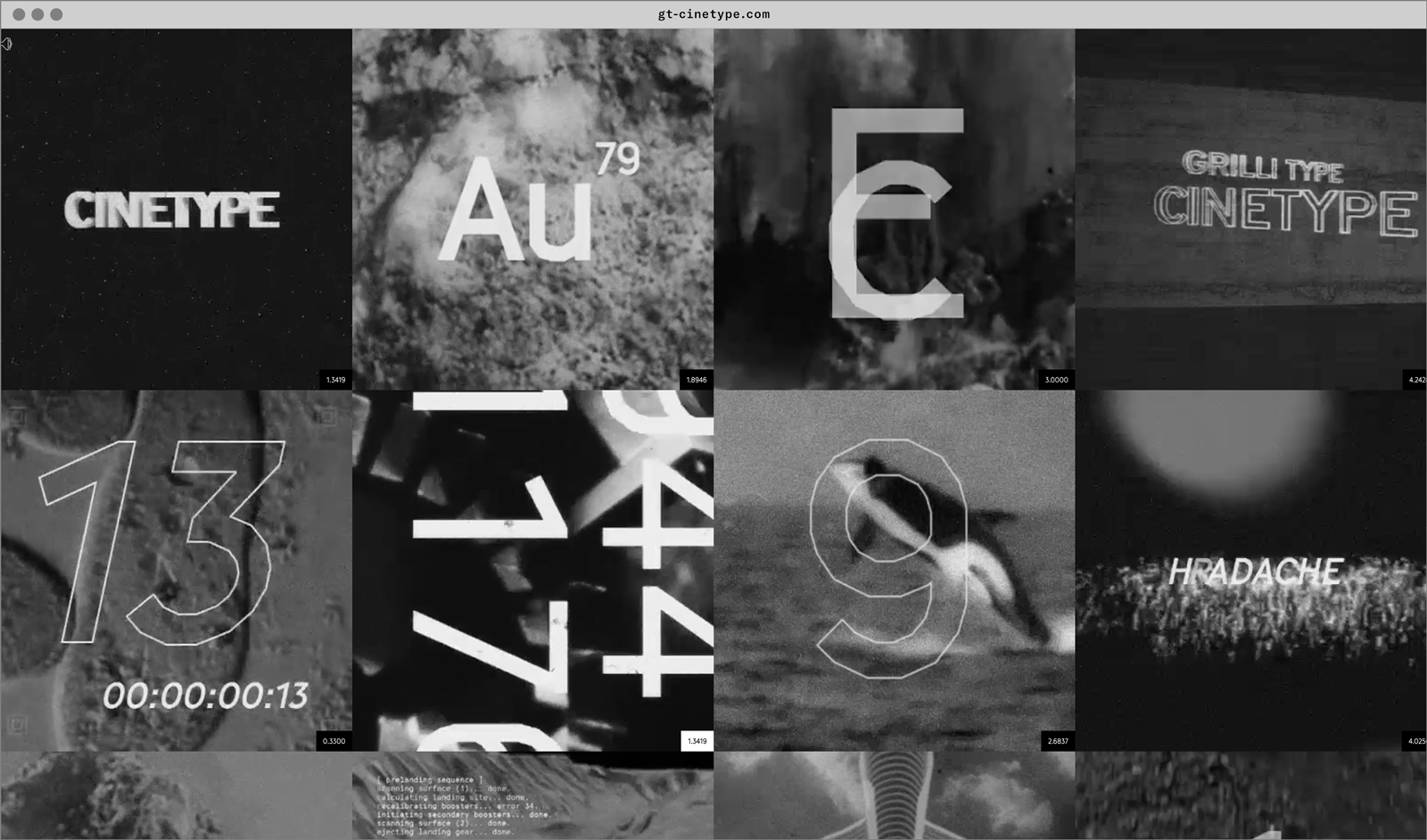
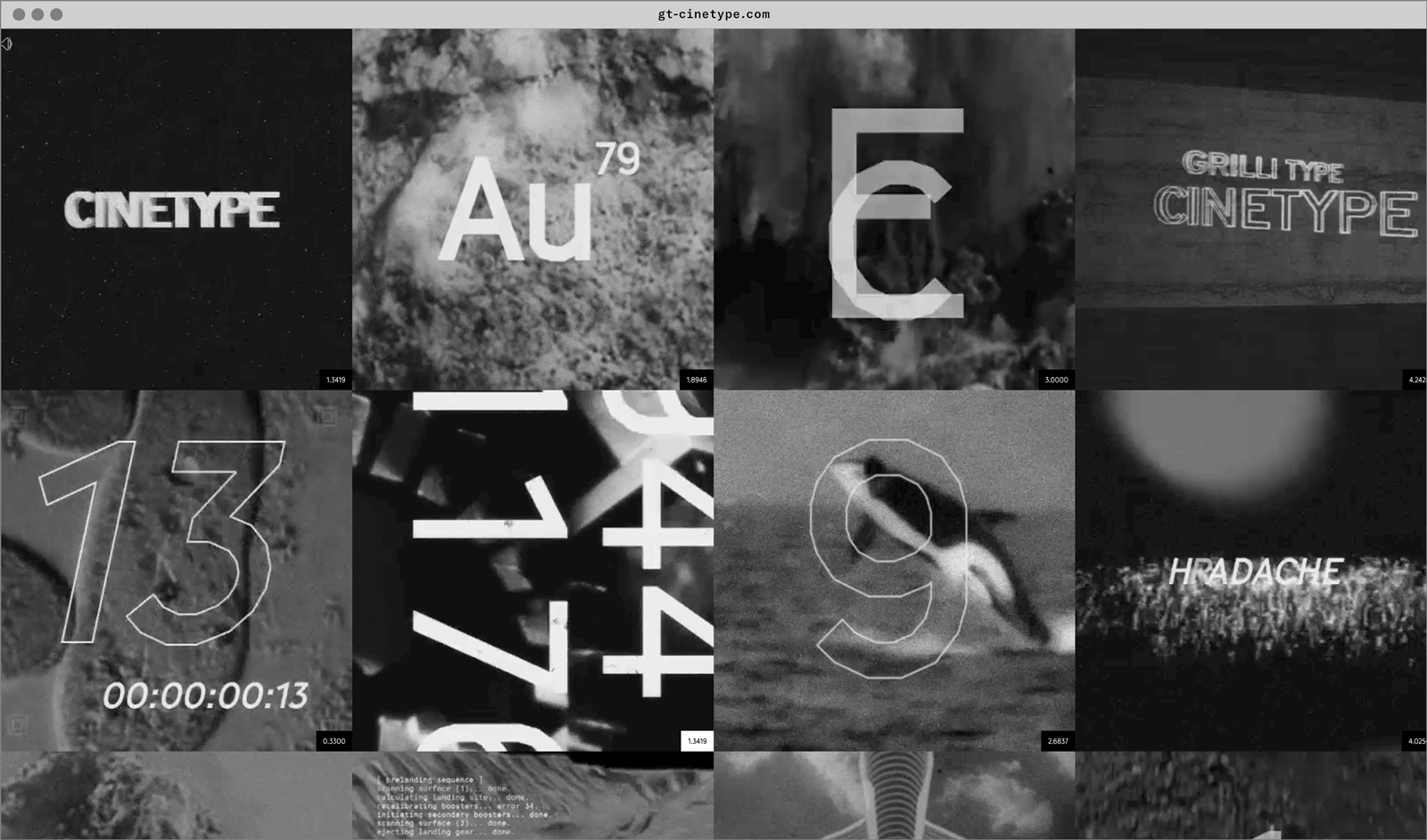
- Visit the GT Cinetype minisite to discover more about the typeface family’s history and design concept.
GT Cinetype in use
